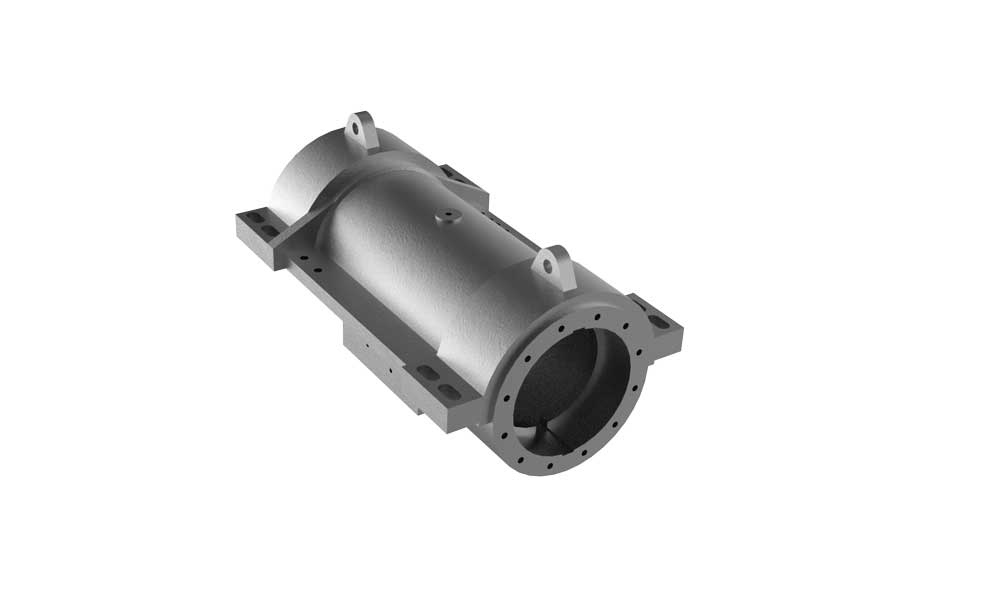Gray Cast Irons


Gray Cast Iron and Its Characteristics
Gray cast iron is a common type of cast iron that has a gray appearance due to the presence of flaky graphite in its structure. This structural feature, in addition to affecting the appearance, gives this material unique mechanical and physical properties. The presence of flaky graphite makes gray cast iron have a high ability to absorb vibrations and has an excellent performance in reducing noise.
One of the main advantages of gray cast iron is the right balance between brittleness and ductility. Although it is less ductile than ductile iron, which has spheroidal graphite, it is less brittle than other types of cast iron and has good resistance to mechanical stress. These characteristics have made gray cast iron a widely used material in various industries.
The applications of gray cast iron are very wide and diverse. One of the most important uses of this type of cast iron is in the manufacture of engine shells, where vibration absorption and heat transfer are of particular importance. Brake discs are also another common application of gray cast iron due to the need to withstand frictional forces and dissipate heat. In addition, this material is also used in the production of casting molds, as the combination of its mechanical properties and thermal stability makes this material very suitable for this application.
Overall, gray cast iron has become a key material in the design and manufacture of industrial and automotive components, with features such as high vibration resistance, noise reduction, and favorable formability. The material’s ability to adapt to diverse needs has made it a popular choice in many engineering applications.
Grade | C (%) | Si (%) | Mn (%) | S (%) | P (%) | Other Elements (%) | Applications |
ASTM A48 Class 20 | 3.2-3.4 | 1.5-2.5 | 0.5-0.8 | ≤0.15 | ≤0.20 | – | Light-duty machine parts, housings |
ASTM A48 Class 30 | 3.0-3.4 | 1.8-2.4 | 0.5-0.8 | ≤0.15 | ≤0.20 | – | Automotive parts, compressor housings |
ASTM A48 Class 40 | 3.0-3.2 | 1.8-2.4 | 0.7-1.0 | ≤0.15 | ≤0.15 | – | Cylinder heads, pump bodies |
ASTM A48 Class 50 | 3.0-3.2 | 1.8-2.2 | 0.8-1.2 | ≤0.12 | ≤0.12 | – | High-strength machine bases, engine parts |
ISO 185/JL/150 | 3.3-3.6 | 1.8-2.3 | 0.6-0.9 | ≤0.15 | ≤0.20 | – | General engineering applications |
ISO 185/JL/200 | 3.3-3.6 | 1.8-2.3 | 0.6-0.9 | ≤0.12 | ≤0.20 | – | Structural components, machine parts |
ISO 185/JL/250 | 3.2-3.5 | 1.8-2.3 | 0.8-1.0 | ≤0.12 | ≤0.15 | – | Crankcases, flywheels, cylinder blocks |
ISO 185/JL/300 | 3.0-3.3 | 1.8-2.2 | 0.9-1.2 | ≤0.12 | ≤0.12 | – | Engine frames, heavy-duty machinery parts |
GJL-150 (EN 1561) | 3.3-3.6 | 1.9-2.5 | 0.6-0.9 | ≤0.15 | ≤0.20 | – | Automotive parts, housings |
GJL-200 (EN 1561) | 3.3-3.5 | 1.9-2.5 | 0.6-0.9 | ≤0.12 | ≤0.20 | – | Structural components, gear housings |
GJL-250 (EN 1561) | 3.2-3.4 | 1.9-2.3 | 0.7-1.0 | ≤0.12 | ≤0.15 | – | Cylinder heads, pump bodies |
GJL-300 (EN 1561) | 3.0-3.3 | 1.8-2.3 | 0.9-1.2 | ≤0.12 | ≤0.12 | – | Heavy-duty machinery parts, engine frames |
Class 20 (SAE J431) | 3.3-3.6 | 1.5-2.3 | 0.6-0.9 | ≤0.15 | ≤0.20 | – | Automotive parts, general engineering |
Class 30 (SAE J431) | 3.2-3.5 | 1.5-2.3 | 0.6-0.9 | ≤0.12 | ≤0.20 | – | Compressor housings, small machine parts |
Class 40 (SAE J431) | 3.1-3.4 | 1.5-2.3 | 0.8-1.0 | ≤0.12 | ≤0.15 | – | Machine bases, pump components |
Class 50 (SAE J431) | 3.0-3.2 | 1.5-2.2 | 0.9-1.2 | ≤0.12 | ≤0.12 | – | Heavy-duty engine parts, structural bases |
Alloyed Gray Iron (Ni-Cr) | 2.9-3.2 | 1.8-2.3 | 0.7-1.0 | ≤0.12 | ≤0.12 | Ni: 1.0-3.5, Cr: 0.2-1.0 | High-strength and wear-resistant components |
Heat-Resistant Gray Iron | 2.9-3.2 | 1.5-2.5 | 0.7-1.2 | ≤0.12 | ≤0.12 | Ni: 1.5-3.5, Cr: 0.5-1.5 | High-temperature applications, exhaust parts |
Copper-Alloyed Gray Iron | 3.2-3.6 | 1.7-2.3 | 0.6-0.9 | ≤0.12 | ≤0.15 | Cu: 0.5-1.0 | High-corrosion-resistance applications |
Produced Materials
Download catalog
Sepahan Foolad Atashgah Casting Industries Company, with over 30 years of experience in the casting industry, is committed to self-sufficiency by leveraging skilled personnel and experienced managers. The company proudly serves various industries, including steel, copper, mining, cement, and their related sectors, as well as producing cast iron balls required by different industries.
Address
Isfahan – Najafabad – Najafabad Industrial Park 2 – Sanat Square – Doctor Hesabi Blvd – Sub-corner 28


